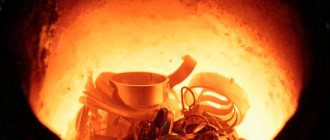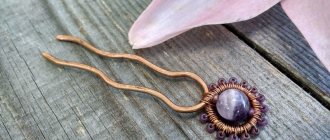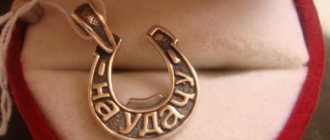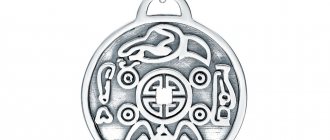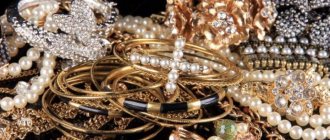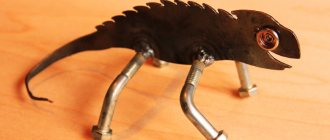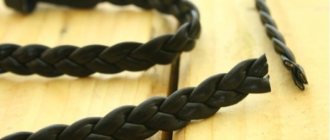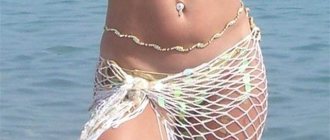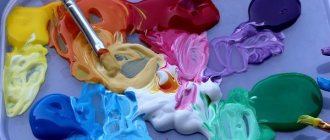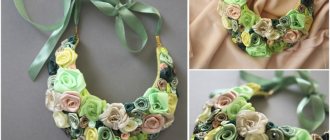Modern jewelry and haberdashery stores are able to satisfy the most sophisticated needs of consumers. And for lovers of original, but not prohibitively expensive solutions, there are shops and online platforms where wizards of decorative and applied arts display their creations.
However, those who want to make a ring at home with their own hands are not transferred. Some people want to save money in this way, some have fun with their children, and some make rings with their own hands in order to put a piece of their own soul into the decoration.
We present to your attention the simplest master classes, following which you will be able to create jewelry from materials that are likely to be found in every home. Some of them are even suitable for children's creativity.
How to make a ring (instructions)
To make the ring truly beautiful and unusual, it is recommended to study a small guide.
Here you will find information on how to make a ring with your own hands at home, what material and tools to use.
Chemical method
One of the ways in which chemical silver plating is performed is that the metal surface is treated with antichlor (sodium thiosulfate) - a solution for fixing photographs. The essence of the silvering method using such a solution is as follows.
- To one liter of antichlorine, which is no longer suitable for fixing photographic film, add six to ten drops of formaldehyde and 4-6 ml of ammonia.
- The copper product to be silvered is carefully prepared: the surface is cleaned to a metallic shine, then the part is boiled in a soda solution and thoroughly washed with water. After such preparation, the product to be treated is immersed in a photo solution for an hour and a half.
- After exposure to a photo solution, the metal is coated with a thin layer of silver. The final stages of the silvering procedure using this technology are washing the product with water, drying and polishing.
- Silver plating of copper products can also be done using ordinary photographic paper.
- Photographic paper is cut into separate pieces and immersed in a solution, the composition of which is indicated on its packaging.
- The product on the surface of which it is necessary to apply a layer of silver is carefully prepared and dipped into a solution with photographic paper.
- The surface to be treated is rubbed with an emulsion layer of photographic paper, resulting in the formation of a silver coating.
- After completing the procedure, the product is thoroughly washed with water, dried, and then rubbed with a soft cloth.
All reagents for this silver plating method can be purchased freely.
You can also silver plate copper in the following way.
- To 300 ml of antichlor add 2 ml of an aqueous solution of ammonium hydroxide and 2-3 drops of formaldehyde.
- The resulting solution is placed in a dark place and the product being treated is immersed in it for 30 minutes (or even an hour and a half).
- After soaking in the solution, the product is dried and wiped with a soft cloth.
Photo of a homemade ring
0
Silvering with heating of the workpiece
To prepare a set for silvering, during which the product being processed will be heated along with the solution used, several techniques are used.
First way
To implement the first method, a mixture of the following composition is prepared:
- 100 grams of silver chloride;
- 600 grams of potassium bitartrate;
- the same amount of table salt.
To weigh the required amount of reagents you will need scales; simple lever-type ones are quite suitable
The resulting dry mixture, which can be stored for a long time in a dark glass container, is dissolved in water (at the rate of 3 tablespoons of dry mixture per five liters of water) and the resulting solution is brought to a boil. The metal to be silvered is boiled in this solution for a quarter of an hour.
As a result of this treatment, the metal is coated with a matte layer of silver. To give the coating shine, it is necessary to additionally treat the product in a solution of the following composition:
- 4.8 liters of water;
- 300 grams of sulfide sodium salt;
- 100 grams of vinegar-lead salt.
The solution must be filtered before use
This solution is brought to a temperature of 70–80° and the product is kept in it for 10–15 minutes. As a result of this treatment, the metal surface acquires a characteristic silver shine.
Second way
You can also silver plate a metal using the following composition:
- silver chloride, obtained from 25 grams of silver nitrate;
- 150 grams of potassium bitartrate;
- table salt;
- water.
2-3 tablespoons of this mixture are added to five liters of water, which is brought to a boil. The products being processed are immersed in such a solution in a clay or porcelain sieve, while the boiling mixture is continuously stirred with a glass or wooden stick.
Wire and beads
Creating jewelry from ready-made silver beads and silver wire requires only simple home tools, and the design is limited only by your imagination. Basic tools: long, thin duckbill pliers, wire cutters, and scissors. Later, you can buy specialized tools such as bead crimpers and curved jewelry pliers. To make a simple bead necklace, use special bead wire, such as tiger tail, to make the necklace stronger, and curved beads. You can make a necklace from ready-made silver beads and decorate it with filigree from silver wire bent into intricate patterns using pliers. Wire can also be used to make earrings in abstract or geometric shapes, and is a great way for beginners to learn how to work with silver.
Kinds
Jewelry made from epoxy resin surprises with its variety. Despite the fact that the general manufacturing technology remains the same, making some adjustments allows you to achieve a truly unique look.
Epoxy rings are surprisingly smooth and even, but they can also be versatile:
- transparent without patterns;
- multi-colored;
- interspersed with shavings;
- with dried flowers;
- half made of wood.
These are just the types of rings that are most commonly found. The ring can also be ordinary jewelry, and only a “pearl” is made of epoxy resin.
Expert opinion
Oleg Vasiliev
Master of making furniture and interior items from epoxy resin. She creates unique items to order in her own production.
Ask a question to the master
The main requirement for fillers for products and wooden parts is that they must be completely dry. Even a small amount of moisture will cause the product to become cloudy from the inside. In dried form, any materials can be used, even organic materials, for example, insects to imitate amber.
Features of silver coating of different metals
Many metals can be silvered: brass, aluminum, steel and other alloys.
During the process, reactions occur that provoke the release of metallic silver, which is responsible for the creation of the characteristic silver coating. There are a number of features of the silvering process under different conditions:
- The composition of the mixture must be selected based not only on the quality of the product, but also on its further practical purpose.
- Light metals are easier to plating. The coating thickness for parts made of dark material must be at least 15 microns.
- The surface of any alloy must be thoroughly cleaned and degreased before the silvering procedure.
Silvering of copper and copper alloys
Silvering of copper is no different from silver plating of other types of products. Copper is not a capricious metal and can be easily processed. However, it is this type of metal that is most susceptible to the formation of oxides and corrosion, and therefore additional preparatory measures in the form of polishing may be necessary before silvering.
Model casting in earth molds
Casting in so-called earth molds is the oldest method, proven over thousands of years. Molding mixtures do not actually consist of black soil, but are a mixture of fine-grained quartz sand and plastic clay in certain proportions. For casting small products with thin relief and a large number of parts, mixtures containing 12-15% clay are used, for large castings - up to 25%. Gases generated during casting must escape freely through the walls of the mold.
The model for casting into earthen molds is made absolutely exactly repeating the original, but a little larger in size. This is an allowance for shrinkage and subsequent processing of the product. Models were traditionally made from wood, wax and plaster. Today, plastic models are becoming increasingly popular. The plastic holds its shape well and is easy to process.
